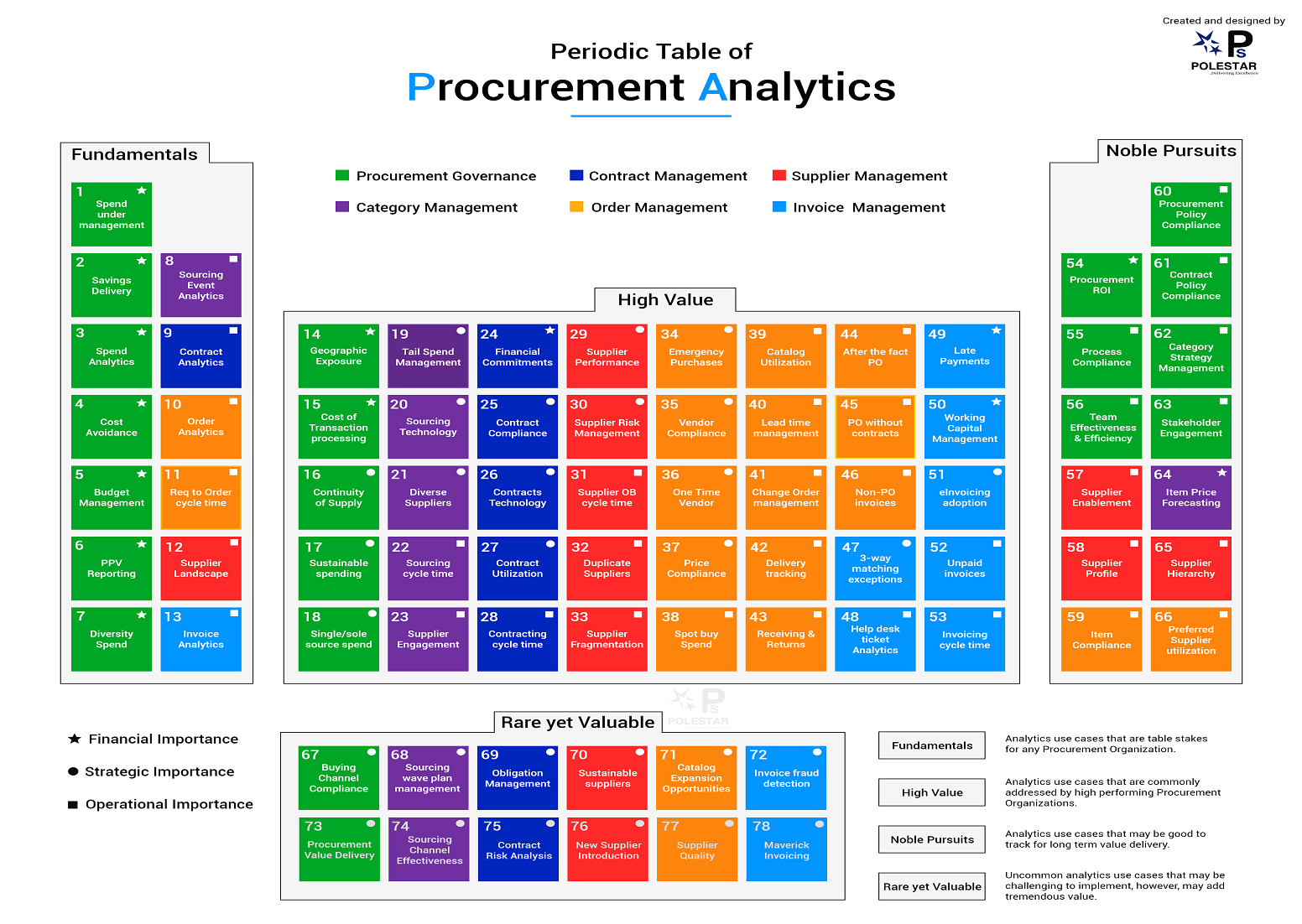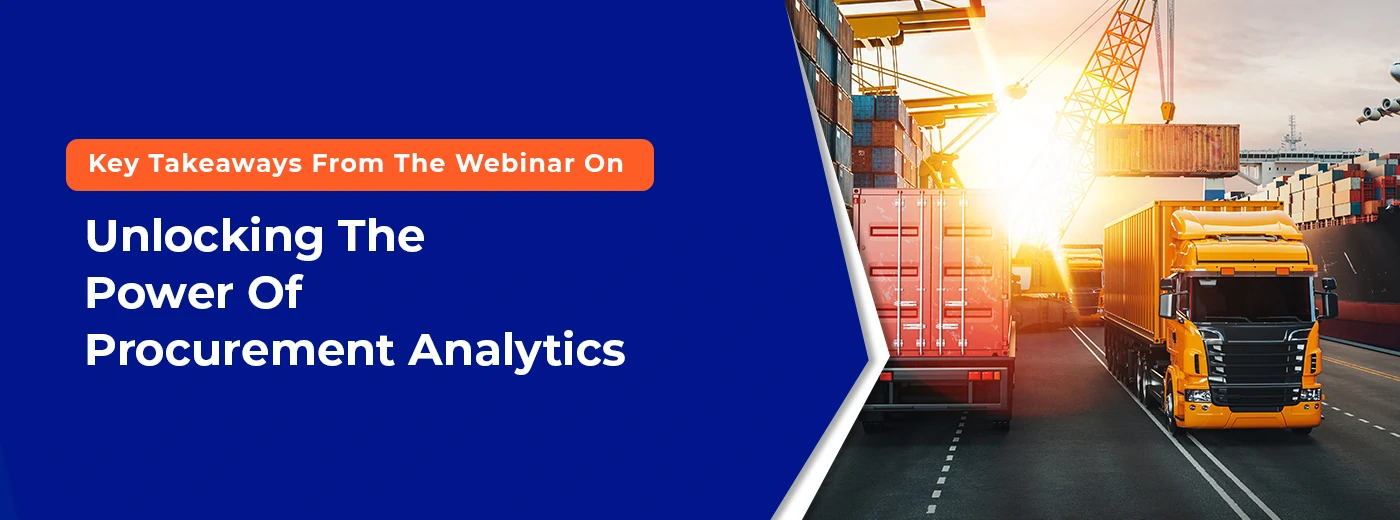Procurement analytics is crucial for organizations to enhance their procurement performance and gain a competitive advantage. But, without sufficient knowledge of analytics tools, many organizations struggle to leverage their procurement data. A procurement analytics maturity model can help by enabling organizations to evaluate their current procurement analytics maturity, identify improvement areas, and drive better business outcomes.
In case you missed the webinar, we’ve summarized some key takeaways from the immensely informative discussion and best practices of using a procurement analytics maturity model. If you’re curious, you can also go ahead and watch the recording of the webinar here.
- It provides a structured approach to benchmarking procurement analytics capabilities against industry best practices.
- It enables the standardization of procurement analytics practices across the organization.
- It helps organizations optimize their procurement processes, identify cost-saving opportunities, and manage procurement-related risks.
- It provides a framework for data analysis and insights that can drive better business outcomes and strategic decision-making.
Procurement's Source-to-Pay (S2P) process lifecycle details how goods and services are procured from suppliers. The process starts with identifying the need for a specific product or service, choosing a suitable supplier, negotiating a contract, issuance of a purchase order, receiving the goods or services, verifying the invoice, and approving payment. By utilizing S2P, procurement can be transparent, efficient, and effective, allowing for accurate records as well as compliance with legal and regulatory requirements.
- Enhanced service delivery: Make the process efficient for business users and enhance procurement engagement by businesses. By focusing on these value delivery areas and leveraging technology, procurement can provide better services to the organization and its customers.
- Supplier Relationship Management: Building strong relationships with suppliers can help procurement to provide better quality products and services to the organization and its customers.
- Improved bottom line: Ensure that major decisions deliver the best value to the business.
- Prioritizing analytics use cases: Prioritizing analytics use cases in procurement involves identifying and ranking areas where analytics can support procurement goals.
- Perform maturity assessment of identified use cases: Performing a maturity assessment of identified use cases in procurement involves evaluating current procurement analytics capabilities and identifying gaps and opportunities for improvement.
- Build a reliable & comprehensive data estate using trusted data sources: Building a reliable data estate in procurement involves establishing an accurate and high-quality foundation for analytics and decision-making.
- Identify the right use cases to extract information from the data: It involves identifying specific procurement areas where data analysis can provide meaningful insights to drive procurement decisions and achieve procurement goals.
- Build a roadmap to drive continuous value add from analytics use case: Developing a roadmap that outlines how to achieve desired results from analytics use case in procurement requires developing a strategic plan.

The Periodic Table of Procurement KPIs is a framework that provides a structured approach to identifying and tracking key performance indicators (KPIs) in procurement. The table is modeled based on the key areas of different use cases and prioritizing them on their level of importance.
- Fundamentals: spend analysis in procurement, Contract analytics, Order analytics, and Invoice analytics, these are the fundamental analytics that every procurement professional should prioritize first.
- High value: These are the analytics use cases that are not very common but most high-performing organizations do them like working capital management, financial commitment, price compliance, and many more.
- Noble pursuits: Use cases under this are very process-related metrics they are not necessarily going to transform your business in the short term but if done properly in the next 2 to 3 years they are going to add significant value.
- Rare yet valuable: These analytics use cases are usually uncommon and may be challenging to implement, however, may add tremendous value.
The periodic table provides a classification of these categories and the specific KPIs that fall under each category. It serves as a guide for procurement professionals to identify and prioritize the KPIs that are most relevant to their organization's goals and objectives.
- Alignment with business goals and objectives
- Effective stakeholder engagement
- Robust market and supplier analysis
- Clear procurement policies and procedures
- Strong supplier relationship management
The procurement Analytics webinar highlighted the importance of leveraging analytics and data-driven insights to drive value in procurement. The key takeaways included the need to prioritize use cases, perform maturity assessments, build a reliable data estate, identify the right use cases, and create a roadmap for continuous value add.
It is clear that procurement analytics is a critical component of a successful procurement strategy, and organizations that invest in this area are well-positioned to improve efficiency, reduce costs, and drive innovation in their supply chains.


